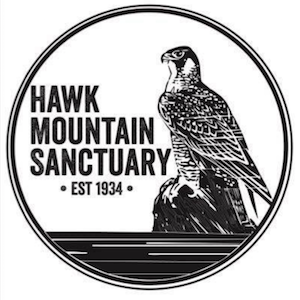Hanover Bald Eagle Blog # 27
In partnership with Pennsylvania Game Commission and Comcast Business .
I’m sure we can all relate to the excitement of hearing the Hanover eaglet’s sudden begging calls and the following thump as Liberty or Freedom lands in the nest. At this stage, the visits by the adults are primarily prey deliveries. In an earlier blog, we discussed what bald eagles can eat, yet deciphering what the family is actually eating requires nest observations. Luckily, we have that option!
There are a variety of factors that influence which types of prey bald eagles will target. Although it would be easy to assume that eagles seize whatever is available, it turns out there is craft involved in their culinary choices. The main factors influencing these decisions are deemed either intrinsic or extrinsic. Intrinsic factors would be things like the pair’s level of parental experience or their own personal physiological health. For example, first-time parents may be less knowledgeable of where and when to find the “easiest” fish to catch. Liberty and Freedom on the other hand, are experienced parents and likely have a high degree of cumulative knowledge between the two of them. Extrinsic influencers on food selection would be things like food availability, weather, and habitat quality. During cold, wet summers, Liberty and Freedom’s time budgets may shift, meaning they spend more time protecting their young from the rain since they cannot thermoregulate for the first 15 days of their life. This in turn compromises the amount of time or care the parents would be able to dedicate to foraging.
Time of year (an extrinsic factor) also has a significant impact on the meal choices that adult bald eagles make. During the breeding season, parent eagles target larger and/or nutrient rich prey items since they have growing mouths to feed. As we have seen at the Hanover home, fish and goslings have made up a significant proportion of delivered prey items. Various studies have shown that bald eagle nest deliveries across North America consist mostly of fish. Next in line are mammals, with birds and reptiles composing the smallest percentage. There are several examples of bald eagle populations that time their nesting season with the spawning of anadromous fish (species returning from the oceans to spawn in freshwater). In Virginia for example, bald eagles not only time their overall nesting season with the end of the shad run, but specifically match the stage of highest nestling energy demands and maximum growth rates with the time of greatest shad availability.
Vulnerability of prey (an extrinsic factor) also influences the foraging decisions of eagle parents. Catfish make up a significant portion of the bald eagle’s diet in Florida, Nova Scotia, Louisiana, Arizona and Texas, presumably because they are susceptible to attacks from above given their downward-facing orientation. They also have a preference for shallow water, making them easier for eagles to spot and to capture. In one study, already-expired, presumably floating catfish made up a high majority of prey brought to the nest. Anadromous fish such as shad are also susceptible to easy predation because they are close to their natural death at the end of their spawning cycle, and therefore easier for eagles to catch if they know where to look. Given the adaptive intelligence of bald eagles, they often do know where to look.
Though no scientific studies have been conducted to assess the specific prey deliveries of the Hanover nest, we, as a community of observers, have the opportunity to document what we see the nestlings feeding upon. Even without statistical analyses or a research protocol, we can easily tell that Liberty and Freedom were keen on providing goslings to their young during a specific period of the nestling stage. If we consider the above-mentioned factors, perhaps goslings provided the biggest “bang for the buck,” in terms of size and nutritional availability for the chicks. Or, perhaps they are easier to attack than other prey. Likely, the answer is a combination of multiple factors. The Hanover nest cam provides us with the chance to observe differences in prey deliveries on a month-to-month as well as an annual basis. Will goslings feature as prominently on the Hanover menu next year? Which species of fish are Liberty and Freedom bringing back to the nest? Are they shallow dwellers or deep-water denizens?
The mysteries of the Hanover kitchen remain. In the meantime, it seems the eaglets are racing their way towards adulthood, and while we are witnessing the occasional skirmish, their treatment of each other is relatively normal for two large siblings sharing a bunk bed with little elbow room! Let us enjoy each and every day of viewing these charming eaglets, as fledging is fast approaching, and we will soon be faced with our own case of empty-nest syndrome!
SOURCES
Markham, Catherine Ann. (2004.) The Influence of Salinity on Provisioning Rates and Nestling Growth in Bald Eagles in the Lower Chesapeake Bay. The Condor, 110(1), 183-187.
Haywood, Dennis D. & Ohmart, Robert D. (1986). Utilization of Benthic-Feeding Fish by Inland Breeding Bald Eagles. The Condor, 88(1), 35-42.
THANK YOU HAWK MOUNTAIN FOR THIS WEEK'S BLOG ENTRY!

RETURN TO HANOVER BALD EAGLE BLOGS
WATCH THE HANOVER BALD EAGLE LIVE CAMS
For over 20 years, HDOnTap has provided live streaming solutions to resorts, amusement parks, wildlife refuges and more. In addition to maintaining a network of over 400 live webcams, HDOnTap specializes in design and installation of remote, off-grid and otherwise challenging live streaming solutions. Contact press@hdontap.com for all media needs, including images and recordings.